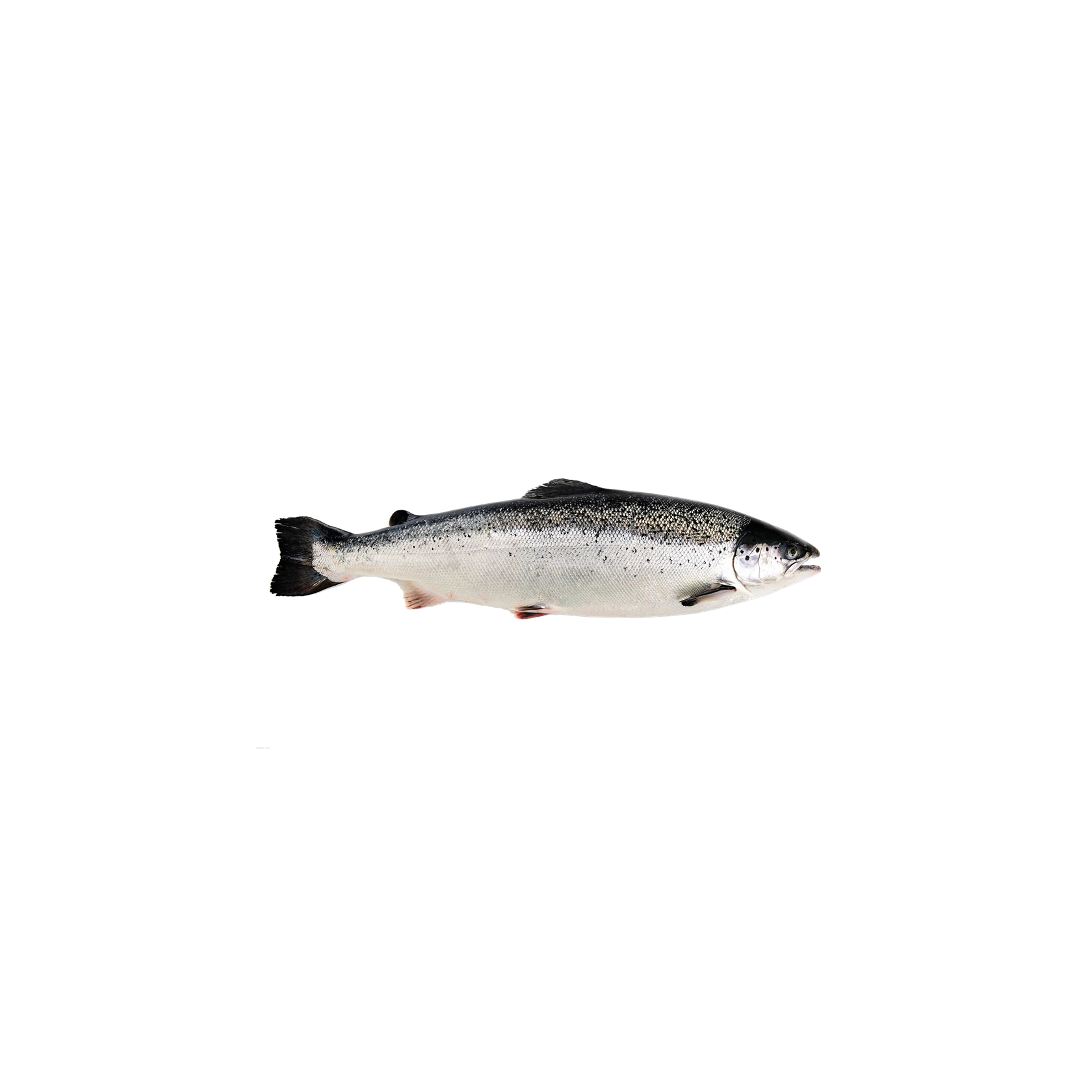

The salmon is easy to recognise with the streamlined body shape, the dark blue upper side, the shiny skin with black dots and the so-called fat (adipose) fin, located in front of the tail fin.
Salmon is nutritionally an excellent product. Salmon have a natural high content of protein and contains a lot of the healthy polyunsaturated fatty acids. Therefore also high in Omega-3 fatty acids (EPA and DHA) and rich in the fat soluble Vitamin D. Salmon is also a good source of the minerals iodine and selenium.
The production and farming of salmon is a resource efficient and climate-freindly form of food production. Lerøy have locations all over the coast of Norway ranging from the county Rogaland in the south all the way up to Finmark in the north. It takes approximately 2-3 years from a salmon roe hatch until a finisihed grown and harvest ready salmon. Through these years the salmon goes through different life stages.
The salmon matures in pens located in the ocean and fjords. They stay in the pens for
14–22 months until they reach the slaughter-ready weight (4–6kg). Accordingly, they are shipped in wellboats to processing facilities, where they are slaughtered and processed.
Read more: How do we produce salmon?
The Norwegian Aquaculture Act regulates some aspects related to how Norwegian
fish farming interacts with the environment. The Act specifies that aquaculture is to be established, conducted and wound up in an environmentally-responsible manner.
Read more about how Lerøy works with sustainability in our Sustainability library
Aquaculture is supervised by several authorities, such as the Norwegian Food Safety Authority, the Norwegian Directorate of Fisheries, the Norwegian Coastal Administration, the County Governor and the Norwegian Water Resources and Energy Directorate.
There are several environmental certifications with stringent environmental, ecological, fish welfare, food safety and HSE criteria. The environmental certifications for farming of salmon are GLOBAL G.A.P., Aquaculture Stewardship Council (ASC) and Best Aquaculture Practices (BAP).
Read more: Our certifications
Public administration of food safety in Norway is intended to ensure safe seafood
for consumers. Work is done on food safety throughout the entire value chain. The
authorities have laid down regulations which are intended to ensure food safety, and it is the Norwegian Food Safety Authority which supervises how enterprises comply with these.
The inspection authorities obtain scientific knowledge from a number of independent technical institutions, such as the Norwegian Scientific Committee for Food Safety (VKM), the Norwegian National Institute of Nutrition and Seafood Research (NIFES) and the Norwegian Veterinary Institute. An individual business owner must itself ensure that the seafood is safe and of proper quality.
Salmon is a very useful raw material and the possibilities is unlimited. Salmon has a mild, full and rich taste. The flesh is firm, orange-red with white marbling.
Salmon is sold fresh or frozen, in portion, fillets or as a whole gutted salmon. Salmon fillet can be marinated, smoked or hot-smoked. Fresh salmon can be used raw for sashimi, sushi, pokè or ceviché.
Salmon can be simmered, roasted, grilled, baked, seasoned and is suitable in soups and caserolles. Smoked salmon can be used on a sandwich, in salads and omelettes, with pasta or in a wrap. Have you tried salmon in a fish taco?
Get inspired and find tasty recipes with salmon here
Atlantic salmon (Salmo salar) farmed in Norway
| Energy (kJ) | 932 kJ |
| Energy (kcal) | 224 kcal |
| Fat | 16,0 g |
| -Saturated fat | 3,0 g |
| -Monounsaturated fat | 5,9 g |
| -Polyunsaturated fat | 5,0 g |
| Carbohydrates | 0,0 g |
| Sugar | 0 g |
| Protein | 16,0 g |
| Salt | 0,11 g |
| Vitamin D | |
| Iodine | |
| Selenium |